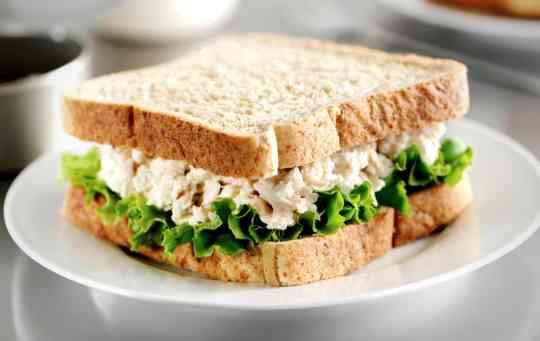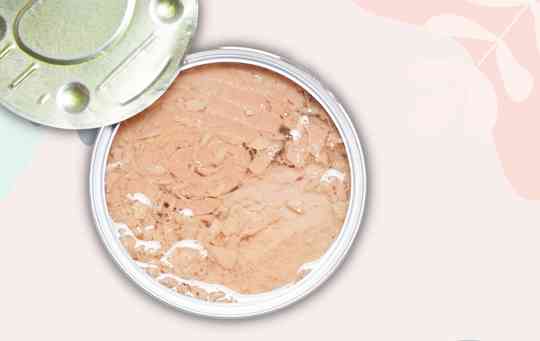How Long Can Tuna Salad Sit Out?
Have you ever been rushing to leave the house and grabbed a pre-made tuna salad from the fridge, just to wonder how long it can stay out before needing to be refrigerated again?
When Left Outside at Room Temperature, How Long Can Tuna Salad Last?
The U.S. Department of Agriculture (USDA) advises against keeping perishable goods at room temperature for longer than two hours, including tuna salad. This is due to the fact that germs can develop quickly in the “danger zone,” which is defined as temperatures between 40°F and 140°F.
In this guide, we will explain the shelf life of tuna salad, how long it may be left out, and the proper ways to prepare and serve this well-liked lunchtime classic.

How Long Can Tuna Salad Sit Out?
If you’re organizing a potluck, you might be wondering how long you can keep the tuna salad out on the counter before it poses a risk to consumer safety.
There are a few exceptions to this rule, though. For instance, perishable goods should not be kept out for more than an hour if the temperature in the room is above 90°F. This is due to the fact that at higher temperatures, germs proliferate much more swiftly.
It’s also important to keep in mind that the shelf life of tuna salad may be shortened if it includes components like mayonnaise or hard-boiled eggs, which are more prone to bacterial growth.
Read Also: How Long Can Cooked Fish Sit Out
Factors That Affect the Shelf Life of Tuna Salad
The type of tuna used, the freshness of the components, and any additives present can all have an impact on the shelf life of tuna salad.
If not treated properly, tuna, a high-protein food, is prone to spoiling. The shelf life of canned tuna, which is frequently used in tuna salad, is usually longer than that of raw tuna.
It’s crucial to remember that once the can is opened, the tuna should be eaten right away because it could pick up bacteria from the can opener or other sources.
The shelf life of the tuna salad can also be impacted by how fresh the ingredients are. For instance, it’s a good sign that the salad is no longer fresh and should be thrown out if the lettuce or other vegetables are wilted or beginning to brown.
Finally, the shelf life of tuna salad can be increased by the inclusion of preservatives.
Some tuna salad brands could include preservatives like citric acid or ascorbic acid to assist slow the growth of microorganisms and lengthen the salad’s shelf life.
But it’s crucial to read the label and be mindful of any potential additions.
How to Store Tuna Salad Safely?

It’s critical to properly preserve your tuna salad to ensure its security. Here are some pointers to remember:
Tuna salad should always be stored in the fridge, except from when it is being served. A refrigerator’s temperature should be kept at 40°F or lower to prevent the growth of bacteria.
When preparing tuna salad for a potluck or other gathering, keep it cold until you’re ready to serve. To keep the salad at a temperature that is safe, use an insulated container or a cooler with ice packs.
Consider dividing a large batch of tuna salad into smaller portions and freezing it for later use if you won’t be able to consume it all within a few days.
Put frozen tuna salad in the fridge for a few hours or overnight to thaw. Avoid thawing tuna salad at room temperature because doing so can promote the growth of microorganisms.
Use a clean spoon or other device to scoop the tuna salad out of the jar before serving. Do not repeatedly use the same spoon because this can contaminate the salad with microorganisms.
How to Tell if Tuna Salad Has Gone Bad?
In order to prevent getting sick after eating spoiled tuna salad, it’s critical to be aware of the warning symptoms. Observe the following warning signs that your tuna salad has spoiled:
- Unpleasant or “off” odor: A lousy tuna salad may have an unpleasant or “off” odor. It is recommended to discard the salad if it smells strongly fishy or strange.
- Change in color: If the tuna salad has taken on a strange hue, like grey or brown, it has likely gone rotten.
- Change in texture: A spoiled tuna salad may have a slimy or slippery texture. It is preferable to discard the salad if the texture changes in an abnormal way.
If you notice any visible mold on the tuna salad, it has likely gone bad and needs to be thrown out.
Read Also: Best Electric Fish Fillet Knife
Is Tuna Salad Good If Left Out Overnight?
Common ingredients for tuna salad include canned tuna, veggies, and mayonnaise or similar emulsifier.
A tuna salad mixed with mayonnaise or other perishable components might degrade if left out at room temperature for an extended period of time, even though canned tuna has a longer shelf life than fresh tuna.
The U.S. Department of Agriculture (USDA) advises against keeping perishable goods at room temperature for longer than two hours, including tuna salad.
This is due to the fact that germs can develop quickly in the “danger zone,” which is defined as temperatures between 40°F and 140°F.
It is unsafe to eat tuna salad if it has been out overnight. The salad’s mayonnaise and other perishable ingredients may contain dangerous bacteria that, when consumed, might result in food poisoning.
Any tuna salad that has been out for a long time should ideally be thrown out.
Can You Eat A Tuna Sandwich Left Out Overnight?

Generally speaking, if a tuna sandwich is created with canned tuna and bread and is left out at room temperature for a brief length of time, it is safe to eat. Fresh tuna spoils more easily than canned tuna, which has a longer shelf life.
The tuna sandwich is unsafe to eat if left out overnight if it contains perishable items like mayonnaise or lettuce.
If consumed, these ingredients may contain dangerous microorganisms that can result in food poisoning. Any tuna sandwich that has been out for a long time, especially if it has been out in warm weather, should ideally be thrown away.
Is Cooked Tuna Safe to Consume Cold?
If handled and stored properly, cooked tuna can be eaten cold. It should be boiled to kill hazardous bacteria and stored in the refrigerator or freezer to prevent contamination.
To lessen the risk of foodborne disease, leftover cooked tuna should be reheated. To reduce foodborne disease, prepare and handle tuna with appropriate hygiene.
How Long Can Unrefrigerated Tuna Salad Last?
After two hours, tuna salad should be refrigerated. Because tuna and mayonnaise can foster dangerous bacteria development. To avoid foodborne disease, trash tuna salad after two hours.
Tuna salad should be refrigerated at 40°F or lower to prevent bacteria growth. Refrigerated tuna salad can be eaten for several days.
However, when eating potentially dangerous foods, use good judgment and be cautious.
Read Also: Can You Cook Thawed Fish The Next Day
How Long Can Tuna Salad Sit Out Under 70 Degrees?
If the temperature is below 70°F, tuna salad can be kept out at room temperature for up to two hours.
It’s crucial to remember that if the salad contains components like mayonnaise or hard-boiled eggs, which are more likely to support bacterial development, the shelf life for safe tuna salad storage may be shortened.
In order to stop the formation of bacteria, it is preferable to refrigerate the tuna salad as soon as the room temperature rises above 70°F.
Additionally, it’s crucial to remember that perishable goods shouldn’t be kept out for longer than an hour if the temperature in the room is above 90°F.
Why Does Canned Tuna Last So Long?

Due to its processing and airtight packaging, canned tuna has a long shelf life. Any bacteria are destroyed during the canning process by heating the tuna to a high temperature. After that, the tuna is sealed in the can to guard against external contamination.
Additionally, canned tuna is frequently packaged with oil or water, which can aid in extending its shelf life. Both the water and the oil can help stop the bacterial growth and keep the tuna from drying out.
It’s crucial to remember that after the can is opened, the tuna should be eaten right away because it could pick up bacteria from the can opener or other sources.
How Should Tuna Salad Be Stored?
It’s critical to properly preserve your tuna salad to ensure its security. Here are some pointers to remember:
Except when serving, keep tuna salad in the refrigerator at all times. To stop the growth of bacteria, a refrigerator’s temperature should be kept at 40°F or lower.
When preparing tuna salad for a potluck or other gathering, keep tuna salad cold until you’re ready to serve. To keep the salad at a temperature that is safe, use an insulated container or a cooler with ice packs.
Consider dividing a large batch of tuna salad into smaller portions and freezing it for later use if you won’t be able to consume it all within a few days.
Put frozen tuna salad in the fridge for a few hours or overnight to thaw. Avoid thawing tuna salad at room temperature because doing so can promote the growth of microorganisms.
Use a clean spoon or other device to scoop the tuna salad out of the jar before serving. Do not repeatedly use the same spoon because this can contaminate the salad with microorganisms.
What Is The Highest Temperature Allowed For Cold Holding Tuna Salad?
The USDA states that 60˚F (16˚C) or lower temperature at which perishable items, including tuna salad, may be stored in the refrigerator.
It is thought that foods kept at or below this temperature are in the “safe zone” and are less likely to contain dangerous microorganisms.
It’s crucial to remember that the “safe zone” temperature might change based on the type of food and whether any perishable components are present.
For instance, to stop bacteria from growing, tuna salad made with mayonnaise or other perishable components may need to be stored at a lower temperature.
Why You Should Store Tuna Salad At Or Below 40°F?
To stop bacteria from growing, tuna salad should be kept at or below 40 degrees Fahrenheit. The “danger zone” is the range of temperatures between 40°F and 140°F where bacteria can grow quickly.
You may assist to prevent the formation of bacteria and extend the freshness of tuna salad by storing it at or below 40°F.
In order to ensure that perishable goods are stored safely, a refrigerator’s temperature should be set at 40°F or below.
How Long Does Tuna Salad Last In The Fridge?

When properly refrigerated, tuna salad normally keeps for three to five days in the refrigerator. The freshness of the ingredients and the presence of any preservatives, however, can affect the shelf life of tuna salad.
It’s crucial to remember that once the tuna salad is opened or prepared, it needs to be eaten right away to stop bacteria from growing.
An off scent or a change in texture are indicators that tuna salad has gone bad and needs to be thrown out if it has been kept in the refrigerator for a long time.
How Should I Store Tuna Salad In The Fridge?
Observe these guidelines for storing tuna salad in the fridge:
- Put the tuna salad in a bag that can be sealed or an airtight container.
- Before placing the tuna salad in the refrigerator, make sure it is cold.
- To determine when the salad was prepared or when the bag was opened, write the date on the container or bag.
- The front of the refrigerator, which usually has the coldest temperature, is where you should store the tuna salad.
The risk of cross-contamination is increased if you store tuna salad close to raw meats or other items that might be contaminated.
How Long Does Tuna Casserole Last In the Refrigerator?
When properly refrigerated, tuna casserole normally keeps for 3-5 days in the refrigerator.
However, depending on how fresh the ingredients are and whether preservatives are included, tuna casserole’s shelf life can change.
It’s vital to remember that once the tuna casserole has been prepared or opened, it needs to be eaten within a few days to stop bacteria from growing.
Long-term refrigerator storage of tuna casserole may result in the development of an off scent or a change in texture, both of which indicate that the food has gone bad and needs to be thrown out.
Can You Freeze Fresh Tuna?
Although fresh tuna can be frozen, it must be handled carefully to avoid bacterial growth. Follow these procedures to freeze fresh tuna:
- The tuna should be washed and dried with paper towels.
- Cut the tuna into pieces that are uniform in size.
- Put the tuna in an airtight container or bag that can be sealed.
- Squeeze the bag or container to remove as much air as you can.
- Put the date on the bag or container and freeze for up to three months.
It’s vital to remember that fresh tuna’s texture and flavor can change when frozen. Since frozen tuna could not be as soft and tasty as fresh tuna, not all recipes might call for it.
Can You Freeze Tuna Salad?
Although tuna salad can be frozen, it must be handled carefully to avoid bacterial growth. When improperly frozen and thawed, tuna salad can contain dangerous bacteria that, when consumed, can result in food poisoning.
Observe these steps to freeze tuna salad:
- Put the tuna salad in a bag that can be sealed or an airtight container.
- Before freezing the tuna salad, make sure it is cooled.
- Squeeze the bag or container to remove as much air as you can.
- Put the date on the bag or container and freeze for up to three months.
Put frozen tuna salad in the fridge for a few hours or overnight to thaw. Avoid thawing tuna salad at room temperature because doing so can promote the growth of microorganisms.
Does Tuna Salad Freeze Well?

Although it can be frozen, tuna salad might not freeze as well as other dishes. When frozen and thawed, the tuna salad’s mayonnaise or other binders may separate or turn watery. The salad’s flavor and texture may be impacted by this.
It’s important to keep in mind that freezing tuna salad might also change the texture of the tuna. Since frozen tuna could not be as soft and tasty as fresh tuna, not all recipes might call for it.
In spite of these probable drawbacks, tuna salad can be successfully frozen. The salad must be handled carefully, and it must defrost slowly in the refrigerator.
The tuna salad should be okay to eat if it has a good consistency and flavor after being frozen and thawed.
Can You Freeze Canned Tuna To Extend Its Shelf Life?
Since canned tuna is already shelf-stable and has a long shelf life when unopened, it does not need to be frozen to increase its shelf life.
Any bacteria are destroyed during the canning process by heating the tuna to a high temperature. After that, the tuna is sealed in the can to guard against external contamination.
To stop the growth of bacteria, the tuna should be eaten within a few days of being opened in the can. It’s not required to freeze opened tuna cans because doing so can change the tuna’s texture and flavor.
Final Thoughts
In order to prevent the development of bacteria, it is crucial to be aware of how long tuna salad can be left out for as well as to properly store and serve it.
You can safely and confidently eat your tuna salad by according to the recommendations and advice provided in this article.

![Can You Freeze Deli Turkey Slices [A Detailed Answer]](https://orbitkitchen.com/wp-content/uploads/2022/08/Can-You-Freeze-Deli-Turkey-Slices-768x512.jpg)





